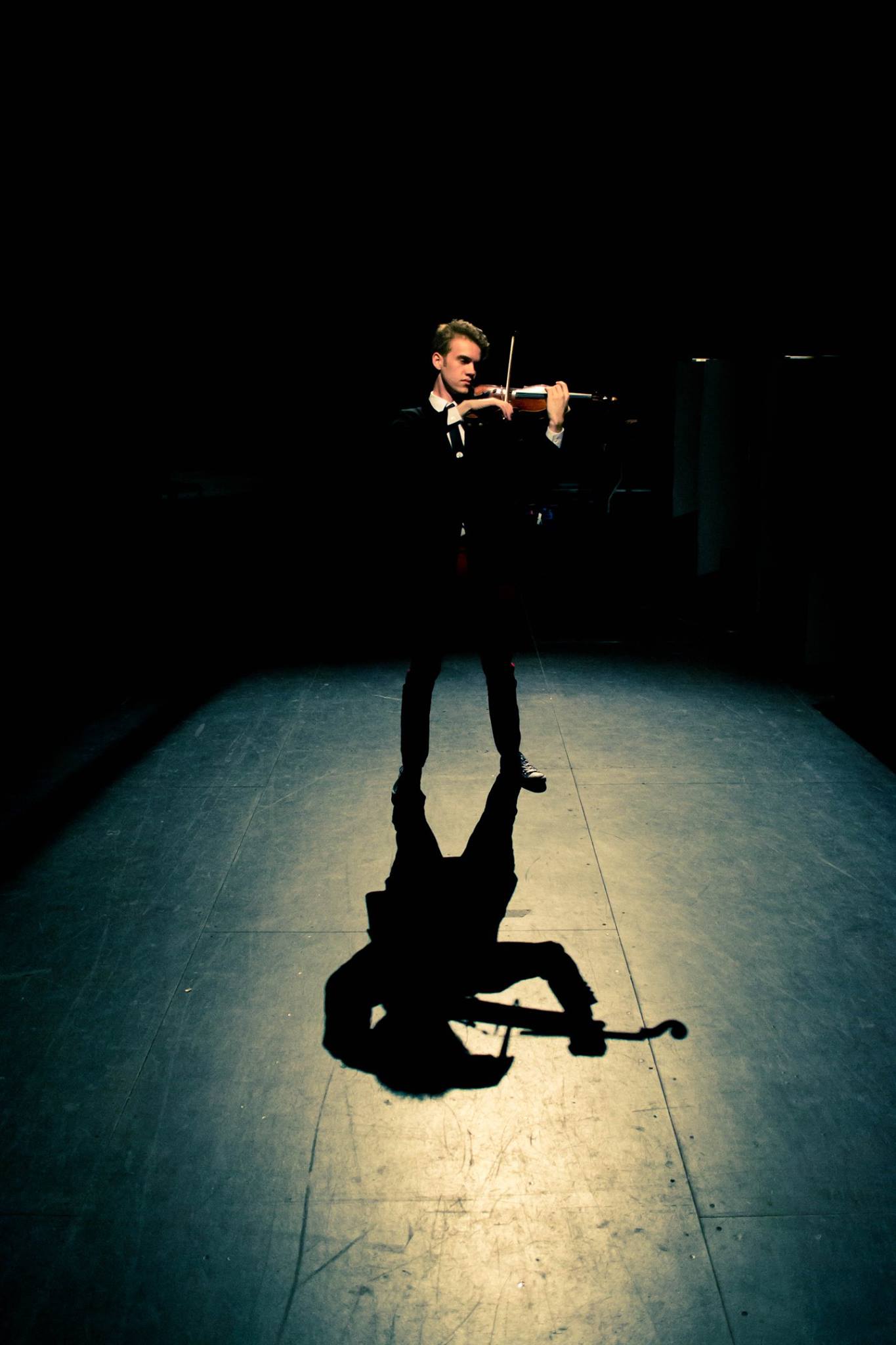Music: July 2016 Archives
 The National Youth Orchestra of the USA will perform its second and final stateside concert tonight, July 14, 2016, at Carnegie Hall before leaving for a two-week tour of European concert halls in Prague, Amsterdam, Copenhagen, and Montpellier. Two young Oklahoma musicians are a part of the orchestra: cellist Ben Lanners of Stillwater and violinist Joseph Bates of Tulsa.
The National Youth Orchestra of the USA will perform its second and final stateside concert tonight, July 14, 2016, at Carnegie Hall before leaving for a two-week tour of European concert halls in Prague, Amsterdam, Copenhagen, and Montpellier. Two young Oklahoma musicians are a part of the orchestra: cellist Ben Lanners of Stillwater and violinist Joseph Bates of Tulsa.
At tonight's concert NYO-USA will perform Mozart's Piano Concerto and Anton Bruckner 6th Symphony, under the baton of Christoph Eschenbach. Emanuel Ax is the featured soloist on the Mozart, accompanied by a reduced chamber orchestra. Valery Gergiev will conduct the European concerts.
NYO-USA was revived in 2013 following a long hiatus. The orchestra has a three-week residency at Purchase College, a campus of the State University of New York, followed by a two-week tour overseas. The orchestra, clad in blue blazers, white shirts, red trousers, and Converse sneakers, serve as musical ambassadors for the USA. The orchestra's travel and expenses are entirely funded by donors.
The Carnegie Hall concert won't be streamed, but you will be able to watch the NYO-USA concert in Amsterdam live on medici.tv on July 21, 2016, at 1:00 pm, Central Daylight Time.
The concert opens with Prelude to the Afternoon of a Faun (Prélude à « L'Après-midi d'un faune ») by Debussy, a work inspired by Stéphane Mallarmé's poem L'Après-midi d'un faune about a half-man, half-goat creature from an ancient Greek legend. Rachmaninov's Piano Concerto n°3 follows. "I wrote this piece for elephants," Rachmaninov once said. It certainly takes someone with gigantic technical prowess to get through the piece, which features some of the most spectacular virtuoso writing in the piano concerto literature. The concert ends with two masterpieces by Prokofiev. First, his Symphony n°4, which has the odd distinction of being both one of the his favorite symphonies and one of the least performed. "I have always liked it," Prokofiev once said. Second are selections from Romeo and Juliet that illustrate the myriad moods of the piece: lyrical, brash, and witty, with plenty of passion.
It may also be available for later viewing. medici.tv requires registration but is free.
VIDEO LINKS:
NYO-USA rehearses Bruckner 6th symphony with maestro Christopher Eschenbach
REVIEW:
James Hodges of the New York Classical Review reports on NYO-USA's Carnegie Hall concert:
It is hard to imagine a group of young players tackling Bruckner, but in Eschenbach's patient hands, they consistently found the sweet spot in the composer's Sixth Symphony. In the first movement, with the orchestra galloping along toward majestic peaks, luminosity combined with bloom and resonance for results that would rival many professional ensembles. (It would be interesting to know how many in the group had ever played any Bruckner before.) Eschenbach encouraged clean articulation, with timpani as the magnetic heartbeat and brass barely peeking through the clouds, until the glorious conclusion.As the second movement began, thoughts drifted to a question an acquaintance answered years ago, "What is the most beautiful thing in classical music?" His reply was "Suspensions"--the slight dissonance produced when a note is held over before a chord change resolves.
The Adagio of the Sixth, marked "sehr feierlich" ("very solemn"), is filled with such moments. Eschenbach let the expansive lines flow, sometimes almost to the breaking point, but always ensuring that the main melodic material was in slight relief against the sometimes massive canvas. An alluring wind section didn't hurt, either. To be fair, one could sense that the conductor's leisurely tempos were testing the patience of some in the audience, but then, Bruckner's pace seems to divide listeners anyway. In any case, Eschenbach admirably captured that Brucknerian ache--that sense of fingertips gently touching the sublime--and the orchestra responded with both commitment and restraint.
In the Scherzo, marked by gutsy, urgent work, it was again heartening to see young performers giving the material maturity well beyond their years. The gentle Trio section made a serene idyll.
The finale opens with hushed scurrying, soon interrupted by brass sprays that eventually explode in splendor. Whispers are chased by roars. In particular, the orchestra's horn section did heroic work in Bruckner's treacherously written parts, which can flummox players of any age. The strings, cohesive all evening, sounded even more unified here. As he did throughout the symphony, Eschenbach made the most of the composer's contrasts, reaching the final page with impressive intensity.
When the curtain call began, with most in the audience standing and cheering, Eschenbach motioned first to the horns, and then to the trumpets, trombones, and tuba. Bruckner can be a big bite for some audiences: as Janet E. Bedell wrote in the program notes, "listeners must adjust their 21st-century clocks." But as each component of the ensemble basked in its portion of the warm ovations, it was hard not to think that the future of classical music is in exemplary shape.